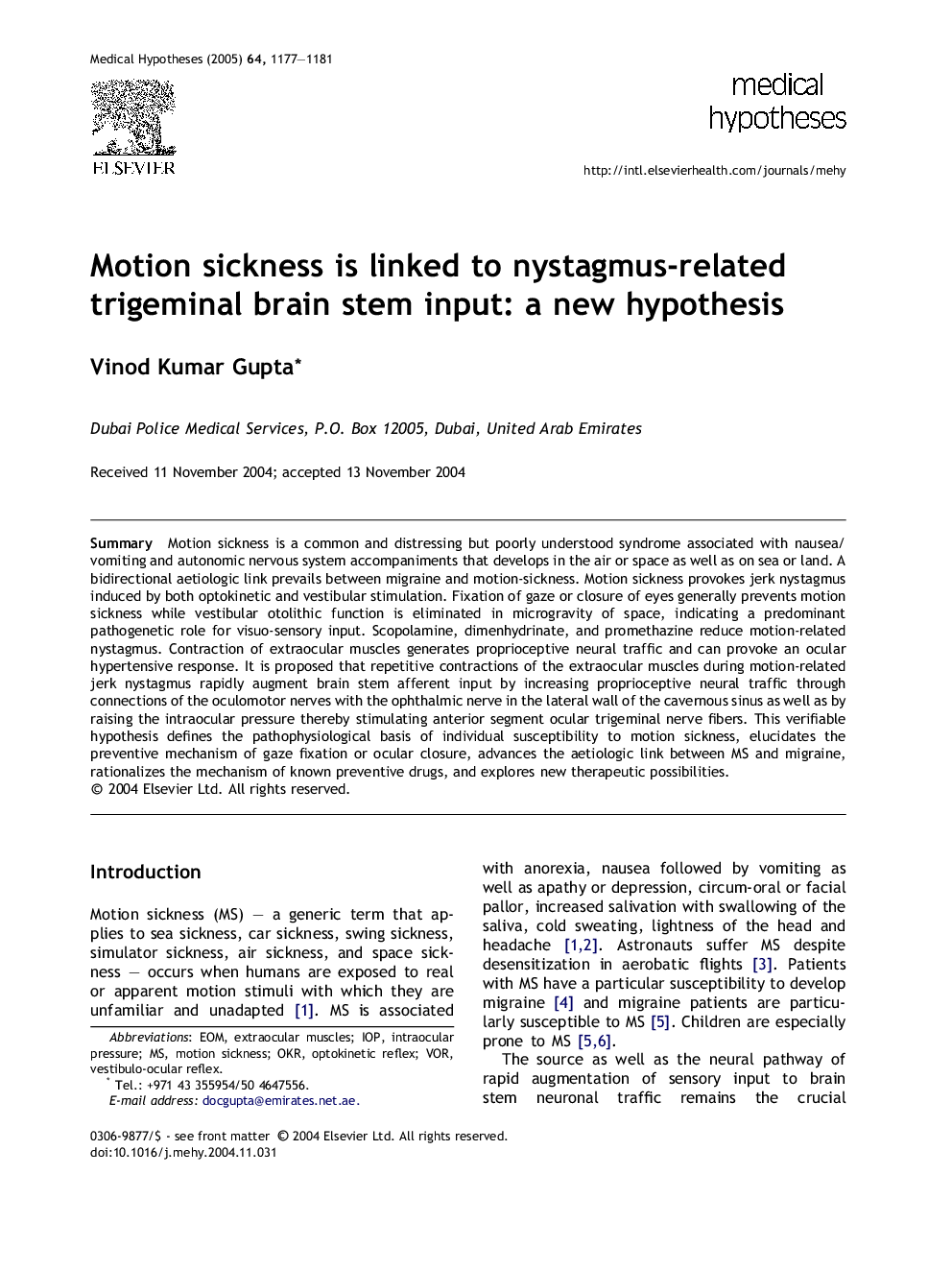| کد مقاله | کد نشریه | سال انتشار | مقاله انگلیسی | نسخه تمام متن |
|---|---|---|---|---|
| 8995751 | 1115101 | 2005 | 5 صفحه PDF | دانلود رایگان |
عنوان انگلیسی مقاله ISI
Motion sickness is linked to nystagmus-related trigeminal brain stem input: a new hypothesis
دانلود مقاله + سفارش ترجمه
دانلود مقاله ISI انگلیسی
رایگان برای ایرانیان
کلمات کلیدی
موضوعات مرتبط
علوم زیستی و بیوفناوری
بیوشیمی، ژنتیک و زیست شناسی مولکولی
زیست شناسی تکاملی
پیش نمایش صفحه اول مقاله

چکیده انگلیسی
Motion sickness is a common and distressing but poorly understood syndrome associated with nausea/vomiting and autonomic nervous system accompaniments that develops in the air or space as well as on sea or land. A bidirectional aetiologic link prevails between migraine and motion-sickness. Motion sickness provokes jerk nystagmus induced by both optokinetic and vestibular stimulation. Fixation of gaze or closure of eyes generally prevents motion sickness while vestibular otolithic function is eliminated in microgravity of space, indicating a predominant pathogenetic role for visuo-sensory input. Scopolamine, dimenhydrinate, and promethazine reduce motion-related nystagmus. Contraction of extraocular muscles generates proprioceptive neural traffic and can provoke an ocular hypertensive response. It is proposed that repetitive contractions of the extraocular muscles during motion-related jerk nystagmus rapidly augment brain stem afferent input by increasing proprioceptive neural traffic through connections of the oculomotor nerves with the ophthalmic nerve in the lateral wall of the cavernous sinus as well as by raising the intraocular pressure thereby stimulating anterior segment ocular trigeminal nerve fibers. This verifiable hypothesis defines the pathophysiological basis of individual susceptibility to motion sickness, elucidates the preventive mechanism of gaze fixation or ocular closure, advances the aetiologic link between MS and migraine, rationalizes the mechanism of known preventive drugs, and explores new therapeutic possibilities.
ناشر
Database: Elsevier - ScienceDirect (ساینس دایرکت)
Journal: Medical Hypotheses - Volume 64, Issue 6, 2005, Pages 1177-1181
Journal: Medical Hypotheses - Volume 64, Issue 6, 2005, Pages 1177-1181
نویسندگان
Vinod Kumar Gupta,